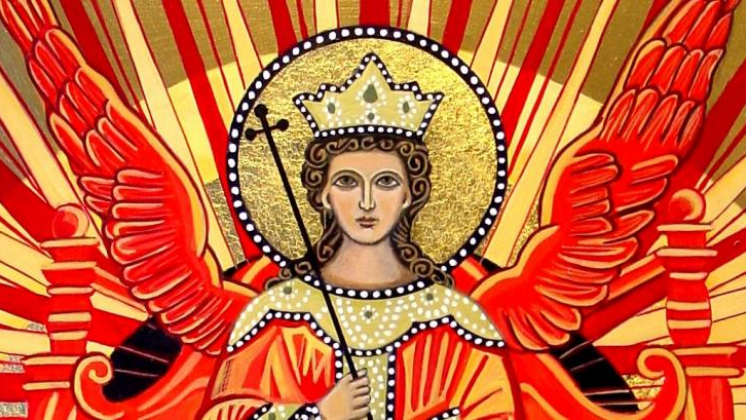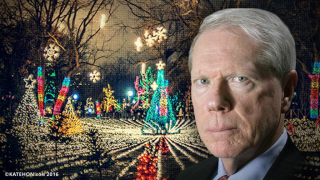Christian Metaphysics: The Essence of the Problem
Christianity is that tradition whose metaphysical dimension has been studied least of all. This is quite a paradox since one would think that such a deep study of Christianity, the religion of the West, would attract all those interested in metaphysics and who, following Guénon, are trying to make sense of the most profound aspects of Tradition. Nevertheless, the disputes surrounding Christianity in Traditionalist circles are, as a rule, limited to fairly secondary, practical issues regarding the virtual initiation of the sacraments, the absence of an idea of cyclical time, etc. In all of this, one can see a tacit consensus among Traditionalists that Christianity is nothing more than a reduced, incomplete tradition whose esotericism has been practically lost, and whose metaphysical content cannot be detached from the dense veil of exoteric scholastic theology and the hazy subjective intuitions of mystics. All attempts to identify any consistency between the basic principles of Christianity and the conceptual categories of other, more metaphysically developed traditions (primarily Hinduism) have yielded rather poor results and have been based on strained interpretations and biased urges to arrive at any cost at conclusions which match Guénon’s own ideas (this is clearest of all in the book by Abbot Henri Stéphane, Introduction à l’ésotérisme chrétien [1]).
These circumstances, however, can be explained quite simply. The problem is that the Guénonian approach has spread only in narrow circles of the intellectual elite of the West, where by Christianity is usually understood, in the best case, Catholicism. But the specificity of Catholicism is such that, from the moment that the Western Church fell away from the Eastern Church, Catholicism built its dogmatic and intellectual foundation on a conscious rejection of the metaphysical content of Christianity. All the scholastic constructs were essentially an ambition to develop a slender theological doctrine while completely ignoring the ontological and metaphysical elements which were in fact present in the Christian tradition before the schism and preserved even afterwards. Of course, they survived exclusively in the Eastern Church, i.e., in the bosom of Orthodoxy. But Catholics, and even the most profound among them, seem to be unaware of this.
Orthodoxy, for its part, despite having preserved ontological and metaphysical wholeness, from a certain time onward could no longer assert its metaphysical content (i.e., actual Christian metaphysics) in clear categories. Shortly after the “Palamite disputes” when Orthodox esotericism experienced its last dazzling rise in history, this line was somewhat marginalized and “frozen”, as priority was given to the exoteric sides of the Church. In the late 19th and early 20th centuries, many Russian theologians and even secular philosophers, intuitively surmising the special metaphysical nature of Orthodoxy, attempted to formulate certain principles for reviving the forgotten dimension of this tradition. However, most of these attempts did not yield serious results since none of them were familiar with the works of Guénon. Hence why only now, in our opinion, is it possible to acquire adequate knowledge of the most important proportions of the structure of fully-fledged metaphysics.
It can be said that although Western Traditionalists had the intellectual apparatus developed by Guénon, they did not have an adequate object for applying such, since Catholicism fundamentally prohibits one from going from the exoteric to the esoteric and metaphysical levels and, moreover, places insurmountable obstacles along the way. The Orthodox had and have a fully-fledged object, the Orthodox Christian Church Tradition and a full, irreducible dogma, but they have hitherto lacked an adequate metaphysical apparatus. Thus, for two opposite reasons, both in West and East the most widespread, well known, familiar, and close tradition – Christianity – has remained the most unknown, mysterious, and closed, all the while as Traditionalists rather well mastered Islamic metaphysics, Buddhism, Hinduism, Taoism, and even some archaic cults. The distant and exotic paradoxically became dearer to modern scholars nominally belonging to Christian civilization than “their own,” the familiar and close.
Be that as it may, Russians’ first acquaintance with the ideas of Guénon [2] now allows us to chart our way out of this impasse and to try to compare the overall metaphysical picture with the dogma of Orthodox Christianity. One should not be mistaken as to the simplicity of such a study. The near complete absence of references to Orthodoxy among Traditionalist authorities makes this task extremely difficult and risky. Nevertheless, without claiming final truth on this matter and all the while leaving the way open for alternative pursuits, we will try in this work to understand the metaphysical nature of Orthodoxy and, as follows, arrive at a formulation and recognition of the essence of Christian metaphysics.
Footnotes:
[1] abbe Henri Stéphane, Introduction à l’ésotérisme chrétien, Paris, 1979.
[2] At the present moment, the following books of R. Guénon have been published in Russian: The Crisis of the Modern World (Moscow, 1992), The King of the World in the journal Voprosy filosofii from 1993; The Reign of Quantity and the Signs of the Times (Moscow, 1994), Fundamental Symbols of the Sacred Science (Moscow, 1996), and articles in the journal Milyi Angel No. 1, in the journals Voprosy filosofii, Literaturnoe obozrenie, and Volshebnaia Gora (chapters from the books An Introduction to the Study of the Hindu Doctrines, Spiritual Authority and Temporal Power, and The Symbolism of the Cross, etc.)
Translator: Jafe Arnold




